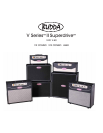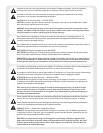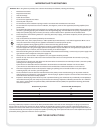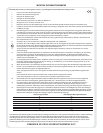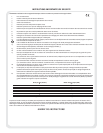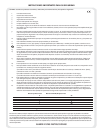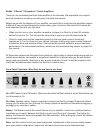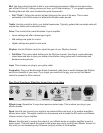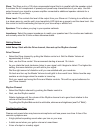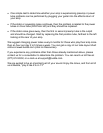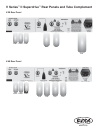
Mid: Use this push/pull control to dial in your midrange frequencies. Mids are the most active
part of the EQ circuit. Cutting scoops your tone, sort of like creating a “V” in a graphic equalizer.
Boosting them will add more fundamental guitar frequencies.
Pull “Thick”: • Pulling this control will add fullness to the tone of the amp. This is more
noticeable in the Drive mode, but affects the Rhythm mode as well.
Treble: Use this control to dial in your treble frequencies. Typically, guitars that use single coils will
require less treble and humbuckers more.
Drive: This controls the overall distortion of your amplifier.
Lower settings will offer a blues type of gain•
Mid settings are good for crunch •
Higher settings are great for solo work •
Rhythm: Use the Rhythm control to adjust the gain of your Rhythm channel
Pull Brite:• This control adds brilliance to the Rhythm channel. Use this to create shimmery
clean tones and also to give your treble a boost when using guitars with humbuckers and
darker-sounding woods.
Input: This is where you plug in your guitar cable.
Footswitch: Plug your Budda single-button footswitch cable here to switch between the Rhythm
and Drive channels of your amp. If you forget your switch at the gig, you can pull the Master
control to access the Drive channel.
Rear Panel Functions: What they do and how to use them
Effects Loop: Superdrive V amps have passive series loops. This is where you plug in your
effects devices.
Send: Use this jack to send your signal to an external effect unit input, or to another amplifier’s
effects return input. This signal comes from the preamp and includes the EQ section and Master
Volume control of your amplifier.
Return: Use this jack to receive the output of your effects device or another amplifier’s send or
direct output. This path sends the signal to the power amp and is post EQ and Master Volume. At
this point you are accessing only the power (output) section of the amplifier.



